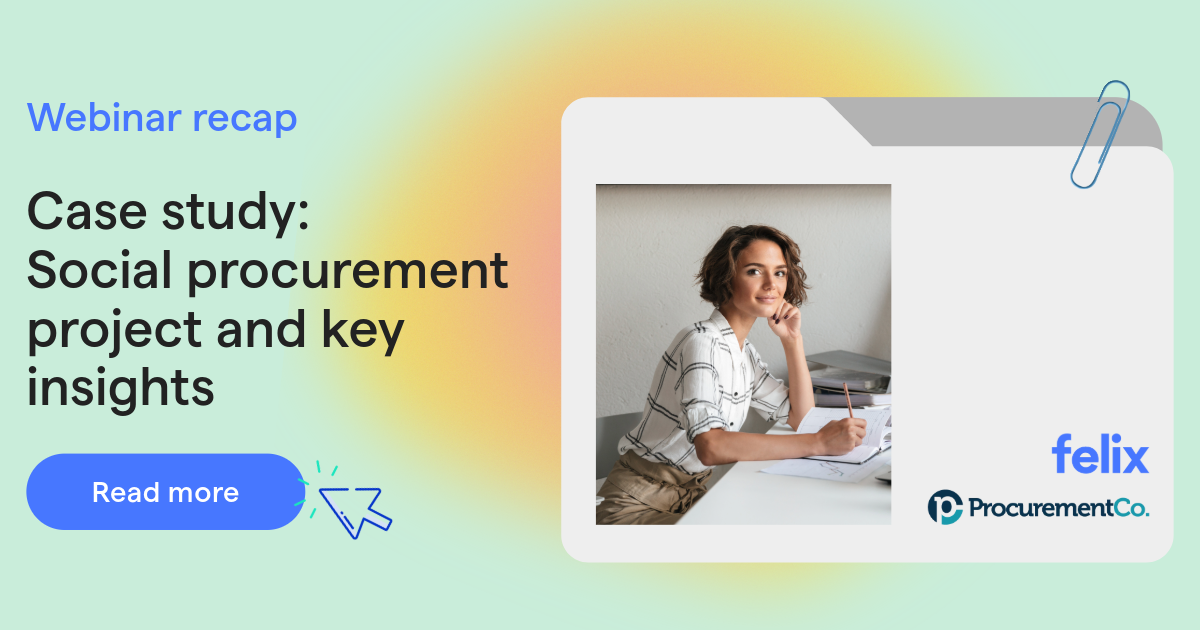It was an absolute pleasure sitting down with Patrick Connolly, CEO and Founder at Fiable, to host our recent webinar: Risk to resilience: protecting your organisation from supply chain insolvency.
The risk of supply chain insolvency is a major business concern in today’s environment, and this was proven by the numerous questions submitted prior to the webinar and asked while we presented live. Attendees were eager to use Pat’s extensive knowledge and expertise to learn more about financial health analytics and ways organisations can protect themselves from third-party insolvencies.
If you want to learn more about what was discussed in the webinar, you can read the recap here, and below we’ve compiled some of the key questions and their responses.
Q: Is financial risk something that’s increasing across all industries? Which industries do you feel are at the highest risk?
A: Financial risk is industry agnostic. If you consider what Fiable offers, and that’s technology to obtain and analyse third-party financial statements, the most value can be added is in capital and asset intensive industries – for example construction, delivery, maintenance and those service-based industries where capital is there and you’re relying on third-parties to get your job done. When you start to look at the data in terms of business insolvencies, it's capital and asset intensive businesses that have increased risk.
Q: My organisation uses an internal flow chart to determine risk, and this informs decisions to trigger due diligence reporting. This seems to work quite efficiently and effectively. What is being proposed that can further improve the efficiency and the cost of this due diligence activity?
A: To think about efficiency gain, you must first assess the current state – and the way that you would be transacting is using a pen and paper-based system where you’re filling out a form and sending it by email to a third-party. They are then emailing another third-party to get the data and this information goes back and forth.
The first efficiency gain here is digiting this process and reducing the risk of human error, which can be achieved by using a streamlined ordering workflow through a solution such as the Fiable platform. Efficiencies have even been seen from suppliers and subcontractors who participate in the requests – our best advocates are the suppliers saying their data is already in the Fiable platform, and that they feel a lot more comfortable sharing data in a secure platform rather than going back to filling out a spreadsheet with a lot of risks.
Future state would be putting this process on autopilot. For example, Felix has a lot of information Fiable needs to create requests, so a nirvana would be automating a request of the assessment based on business rules that are triggered, and then using Fiable to surface it to the right people within your business on the back end.
Q: What’s your advice on how to manage the insolvency risk for the tail spend?
A: It comes down to the program or the rules that you put in place but it also comes down to the risk profile. At the end of the day, it’s up to your organisation as to what you deem is risky. For organisations that are doing a lot of spend with lower-value suppliers (your tail end), maybe it makes sense to put in a program where the risk threshold is a lot lower. And you need to consider the cost of replacement – if a company fails, how many of those companies are in your supply chain that can pick up the job and continue? You need to look at more than spend and look at the impact to your business, and that’s where you can bring in critical path trades and those types of rules.
Q: How do you balance social procurement and diversity in the supply chain with insolvency risk?
A: If you’re conducting a financial check on a particular business and it comes back in the red, it’s not about cutting ties and not giving them that contract. It’s about the awareness and the understanding that risk exists so that you might be able to descope it. Maybe you can support them in other ways. But at least you’re going in eyes open – you don’t want that business to go insolvent and they don’t want to go to insolvent either, and they might not necessarily know it’s coming.
Q: What does a joint solution between Felix and Fiable look like?
A: Customers using the joint solution use a base configuration that embeds the process flow. The ordering of the report is through Fiable’s B2B portal, and Felix is streamlining the process of when a report needs to be ordered and taking the user across via Single Sign On (SSO) to the Fiable portal to order that report. There are two approaches in terms of where the Fiable report should live – some customers might want the report to live in Fiable and others might want to store the report against a vendor’s profile in Felix, and add some reminders or review points, and add some tags against that.

Watch the full webinar recording here.
------
You can learn more about how Felix has partnered with Fiable to help customers uncover financial health risks in their supply chain, in the same platform where they are monitoring all other risk measures: Felix and Fiable strategic partnership.

Related Articles

Webinar recap: Risk to resilience – protecting your organisation from supply chain insolvency
Felix enterprise clients operate in an environment where they are critically dependent on third-party suppliers, contractors and consultants to operate safely, sustainably, and ultimately profitably. If a subcontractor becomes insolvent, the cost of failure on a job can be far greater than what they have been engaged for, and can sink an entire company or project.

Driving social procurement: Key insights from our recent webinar
Recently, I had the pleasure of hosting a webinar titled "Driving social procurement: Practical insights and applications" with guest speaker Lea Schöpping from Procurement Co. This webinar was designed to equip procurement professionals, sustainability leads, supply chain managers, and anyone looking to integrate social responsibility into their business strategy with the knowledge and tools to drive social procurement within their organisations.
The session provided benchmarking insights on current social procurement practices used by both private and government organisations, walked through different project phases and key deliverables of a successful social procurement project, and offered actionable takeaways including the benefits of implementing a social procurement guideline and toolkit.

Construction Procurement Summit 2024: Key takeaways from panel discussion
The Construction Procurement Summit took place in Sydney last month, where I had the pleasure of facilitating a panel with some industry movers and shakers around the topic Exploring the macro trends driving new opportunities across construction supply chains.
We all know the sector is experiencing some strong headwinds with intensifying operating environments, increased costs, labour and skill shortages, more compliance and ultimately reporting, resulting in supply chains are getting more complex.
The session dug deeper into these themes, demystifying some of these challenges and how they can be navigated to realise significant opportunities ahead.
Let's stay in touch
Get the monthly dose of supply chain, procurement and technology insights with the Felix newsletter.




